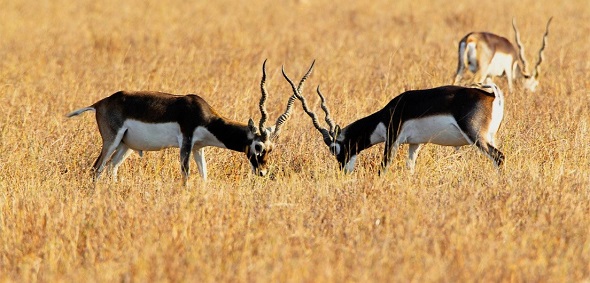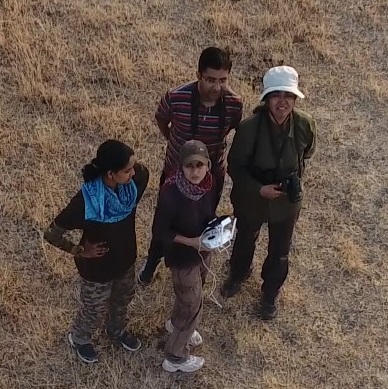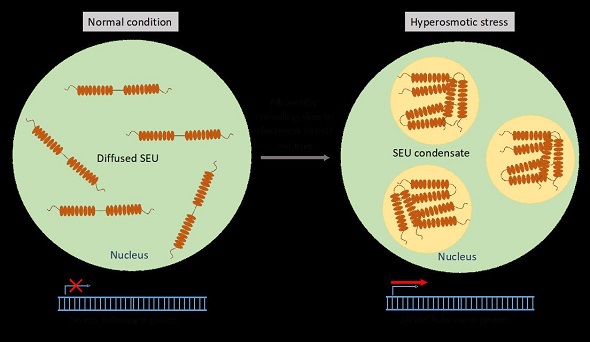
Mating is the pairing of male and female for reproductive purposes. Lekking is an unusual mating system in which some wild male animals maintain tightly organized clustering of territories (leks) visited by females during the mating season. Researchers from the Centre for Ecological Sciences, Indian Institute of Science (IISc), Bengaluru, have studied lekking in blackbucks in the Velavadar National Park, Gujarat.
Lekking has been observed in less than 3% of birds and 1% of mammals. Blackbucks (Antilope cervicapra) are among the only mammals in the Indian subcontinent displaying this behaviour. A male buck forms his own territory. Females swing between these territories sampling males during the mating season.
The research team has proposed to view lekking through the perspective of collective behaviour, in which simple local interactions between organisms and habitats are likely to produce and maintain lekking.
Mating is the pairing of male and female for reproductive purposes. Lekking is an unusual mating system in which some wild male animals maintain tightly organized clustering of territories (leks) visited by females during the mating season. Researchers from the Centre for Ecological Sciences, Indian Institute of Science (IISc), Bengaluru, have studied lekking in blackbucks in the Velavadar National Park, Gujarat.

The black-hole lekking hypothesis holds that a lek forms in response to how females move between male territories before mating. The hotspot theory suggests that a lek overlaps with the home range location of females. The female-choice theory predicts that females directly influence the formation of leks, as they tend to choose a male who is part of an aggregation rather than a solitary male.
In their study, the researchers have deduced that leks are dynamic. The male-male and male-female interactions within the leks typically change over a breeding season. Apart from moving within their territories to court females, males also move outside for short spans to try and attract nearby females.
“The team also proposes hypotheses for complex interactions between males – for example, two or more neighbouring males may cooperate to chase away an intruder, but also fight against each other when it comes to courting a female,” informs the report published by the IISc.
The researchers also introduced a computer simulation model to study how males may leave their territories for foraging, which happens independently or in synchrony with neighbouring males going for foraging. They have proposed further analysis of leks from the perspective of collective behaviour to fully understand the factors that dictate the formation and maintenance of a lek.
The research team comprised Akanksha Rathore, Kavita Isvaran and Viswesha Guttal. The study has been published by Philosophical Transactions of the Royal Society as part of a discussion meeting issue ‘Collective behaviour through time.’
India Science Wire
ISW/SM/IISc/lekking/Eng/22/05/2023





